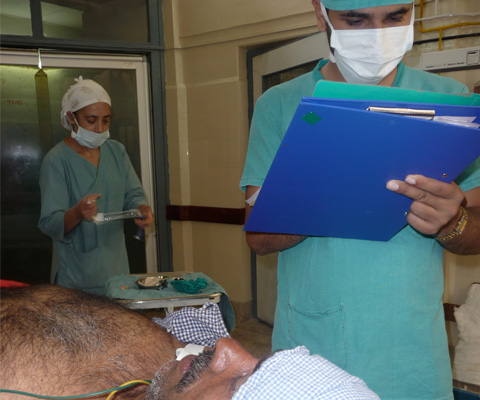Heart Rate
Question: How do you measure the heart rate?

Question: How do you measure the heart rate?
Answer: You measure the heart rate by pulse oximetry and by feeling and counting the pulse.
Question: What is a normal heart rate?
Feeling and counting the pulse
The heart rate is the number of heart beats felt in one minute.
Tip: If you cannot feel the pulse peripherally, the systolic is less than 80 mmHg.If you cannot feel the pulse centrally, the systolic is less than 60 mmHg.
Question: How do you measure the heart rate?
Answer: You measure the heart rate by pulse oximetry and by feeling and counting the pulse.
Question: What is a normal heart rate?
Answer: 60-100 beats per minute.
Question: Why might the heart rate be high?
Feeling and counting the pulse
The heart rate is the number of heart beats felt in one minute.
Tip: If you cannot feel the pulse peripherally, the systolic is less than 80 mmHg.If you cannot feel the pulse centrally, the systolic is less than 60 mmHg.
Question: How do you measure the heart rate?
Answer: You measure the heart rate by pulse oximetry and by feeling and counting the pulse.
Question: What is a normal heart rate?
Answer: 60-100 beats per minute.
Question: Why might the heart rate be high?
Answer: The heart rate might be high due to:
- Airway is blocked, e.g. Low level of consciousness
- Breathing, e.g. lung problem
- Circulation, e.g. bleeding
- Pain
- Sepsis
Feeling and counting the pulse
The heart rate is the number of heart beats felt in one minute.
Tip: If you cannot feel the pulse peripherally, the systolic is less than 80 mmHg.If you cannot feel the pulse centrally, the systolic is less than 60 mmHg.
|
If there is a problem:
|